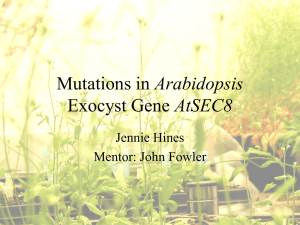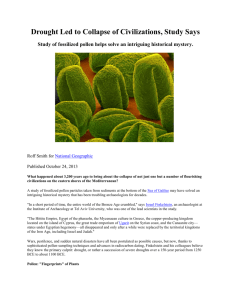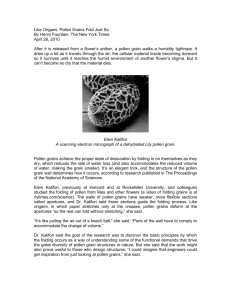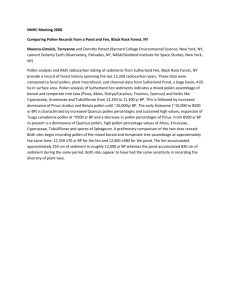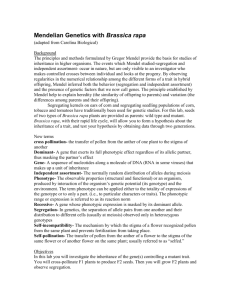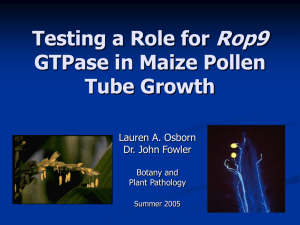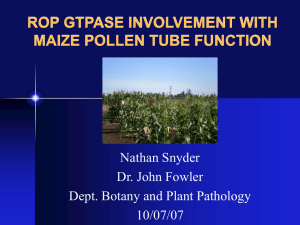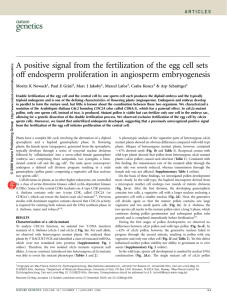observed c-c
advertisement
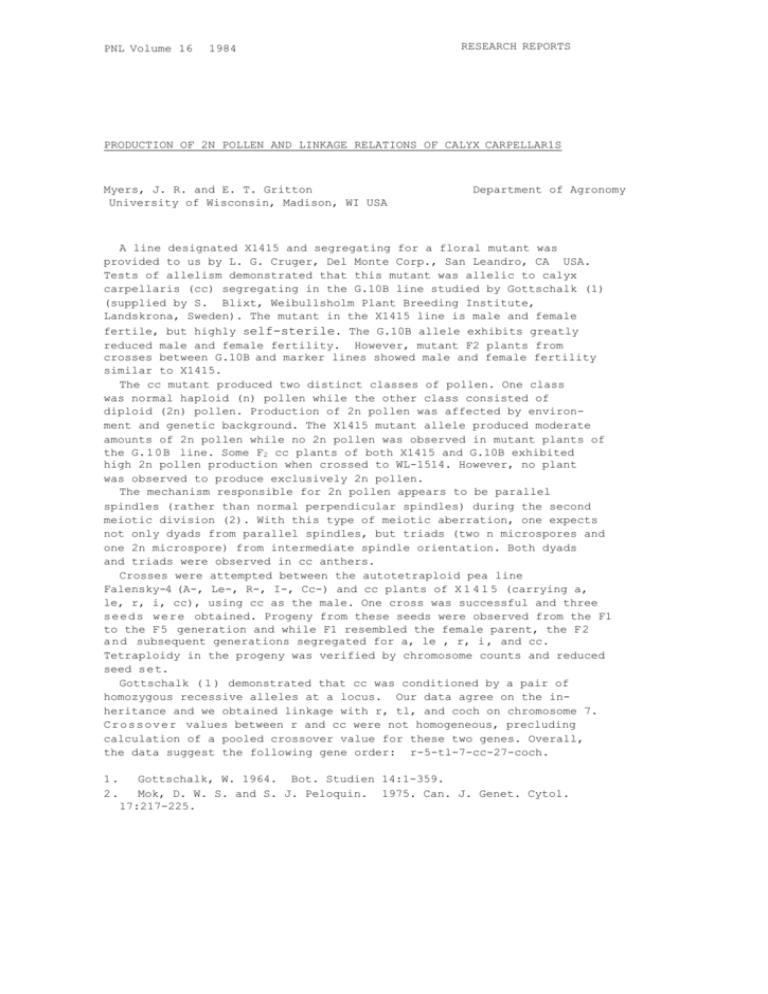
PNL Volume 16 1984 RESEARCH REPORTS PRODUCTION OF 2N POLLEN AND LINKAGE RELATIONS OF CALYX CARPELLAR1S Myers, J. R. and E. T. Gritton University of Wisconsin, Madison, WI USA Department of Agronomy A line designated X1415 and segregating for a floral mutant was provided to us by L. G. Cruger, Del Monte Corp., San Leandro, CA USA. Tests of allelism demonstrated that this mutant was allelic to calyx carpellaris (cc) segregating in the G.10B line studied by Gottschalk (1) (supplied by S. Blixt, Weibullsholm Plant Breeding Institute, Landskrona, Sweden). The mutant in the X1415 line is male and female fertile, but highly self-sterile. The G.10B allele exhibits greatly reduced male and female fertility. However, mutant F2 plants from crosses between G.10B and marker lines showed male and female fertility similar to X1415. The cc mutant produced two distinct classes of pollen. One class was normal haploid (n) pollen while the other class consisted of diploid (2n) pollen. Production of 2n pollen was affected by environment and genetic background. The X1415 mutant allele produced moderate amounts of 2n pollen while no 2n pollen was observed in mutant plants of the G. 1 0 B line. Some F2 cc plants of both X1415 and G.10B exhibited high 2n pollen production when crossed to WL-1514. However, no plant was observed to produce exclusively 2n pollen. The mechanism responsible for 2n pollen appears to be parallel spindles (rather than normal perpendicular spindles) during the second meiotic division (2). With this type of meiotic aberration, one expects not only dyads from parallel spindles, but triads (two n microspores and one 2n microspore) from intermediate spindle orientation. Both dyads and triads were observed in cc anthers. Crosses were attempted between the autotetraploid pea line Falensky-4 (A-, Le-, R-, I-, Cc-) and cc plants of X 1 4 1 5 (carrying a, le, r, i, cc), using cc as the male. One cross was successful and three s e e d s w e r e obtained. Progeny from these seeds were observed from the F1 to the F 5 generation and while F1 resembled the female parent, the F 2 a n d subsequent generations segregated for a, le , r, i, and cc. Tetraploidy in the progeny was verified by chromosome counts and reduced seed s e t. Gottschalk ( 1 ) demonstrated that cc was conditioned by a pair of homozygous recessive alleles at a locus. Our data agree on the inheritance and we obtained linkage with r, tl, and coch on chromosome 7. C r o s s o v e r values between r and cc were not homogeneous, precluding calculation of a pooled crossover value for these two genes. Overall, the data suggest the following gene order: r-5-tl-7-cc-27-coch. 1. 2. Gottschalk, W. 1964. Bot. Studien 14:1-359. Mok, D. W. S. and S. J. Peloquin. 1975. Can. J. Genet. Cytol. 17:217-225.
